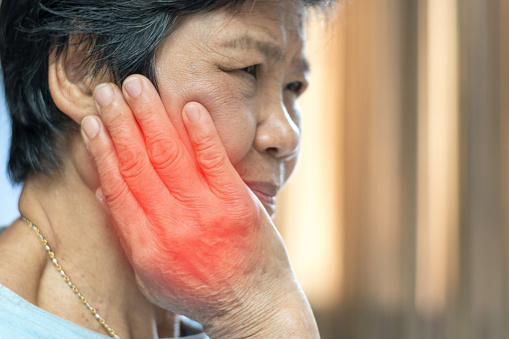
The Temporomandibular Joint is the crucial part of our mouth that enables our jaw movement, including opening and closing our mouth. The TMJ disorder could be a severe condition when you experience pain or discomfort in your jaw, ears, or neck. In some cases, the pain exists on its own, but the right exercises can be helpful for pain-relieving.
Pro Jaw Exercises That Eradicate TMJ Pain
We often don’t think much about our TMJ – the Temporomandibular Joints, but we use them a lot. TMJ is the element that connects our jawbone to the skull. It responds to every word, action, and gesture we make.
How to cure TMJ disorder?
TMJ disorders refer to issues with the jaw joints and jaw muscles. The cause of the disorder could be an injury to the jaw, infection, or overuse. The TMJ pain can lead to mild to severe symptoms like:
1. Discomfort or pain while chewing
2. The ache in the ear, neck, jaw, or face
3. Grating, popping or clicking sounds while opening or closing the mouth
4. Limitation while opening the jaw joint, i.e., jaw lock
5. Severe headache
TMJ pain relief exercises you should do regularly
TMJ exercises are believed to relieve pain. But, there is no clear answer, HOW? Nevertheless, these exercises are beneficial in various ways.
1. Support and improves the jaw muscles
2. Stretch the jaw
3. Ease the jaw
4. Maximize the jaw flexibility
5. It prevents the clicking sound
6. More chances of prompt healing
TMJ exercises are more effective for improving the mouth opening range than mouthguards for people with TMJ disk displacement. The pain-relieving exercises treated here can help you get rid of the TMJ pain and ease the movement of your jaw joints.

Be careful; some activities could have frequency recommendations. If you live in the California States, you can consult Dr. Farzin Farshidi D.D.S., M.D. a TMJ specialist in Orange County at OCMaxSurgery.com serving Orange County and Tustin, for the right help if any frequency recommendations don’t apply to you.
1. Simple Jaw Exercise:
Rest your tongue on the palate of your mouth – the upper portion of your mouth behind the upper front teeth. Let your teeth come apart when relaxing the jaw muscles.
2. Goldfish Partial Opening Exercise:
Gently place your tongue over the mouth palate and place one finger behind the ear. It is the spot where TMJ is. Now put your pointer or middle finger on your chin. Next, pull your lower jaw halfway and close. You might encounter a little bit of resistance, but not pain. Alternatively, place your finger on each TMJ and drop your jaw halfway, then close. Repeat this exercise six times, each set daily if possible.

3. Goldfish full opening exercise:
With your tongue resting on the mouth palate, place one finger on the TMJ and another finger on your cheek. Pull down your lower jaw entirely, and then move it backward.
Alternatively, put one finger on each TMJ while dropping down the jaw. Repeat each set of this exercise six times each day.
4. Chin Tucks:
Place your shoulders back and chest up. Now pull your chin right back in a way it creates a double chin. Hold this step for three seconds. Repeat this exercise at least ten times each day.
5. Resisted mouth opening movement:
Place your thumb on the chin underneath. Open your mouth gently, pressing your thumb gently against your chin to resist. Hold this position for approximately four to six seconds, and then slowly close your mouth.
6. Resisted mouth closing movement:
Press your chin softly with your index finger and thumb. While applying gentle pressure on the chin, keep your mouth closed. This exercise will enhance your ability to chew by strengthening your muscles.
7. Tongue exercise:
Gently open and close your mouth while keeping the tongue in contact with the mouth palate.
8. Jaw movement right to left
Place a one and half inch object into your mouth, like a stacked tongue depressor between the front teeth. Now move your jaw from left to right and vice versa. Stack the object one upon the other to increase the thickness once you find the exercise easier.
9. Jaw movement back and forth:
Place a one and half inch object into your mouth, like a stacked tongue depressor between the front teeth. Now move your jaw back and forth. Stack the object one upon the other to increase the thickness once you find the exercise easier.
TMJ pain can also be relieved with other pain reliever medications. While your ongoing TMJ treatment, your dentist may recommend you to use a few crucial things:
- Mouthguards to prevent jaw clenching and teeth grinding.
- Mouthguards to help realign your jaw.
- Warm towels
- Ice, not longer than 15 minutes per hour. Also, not to apply directly on the skin.
- Stress-relief methods to prevent jaw tension
- Acupuncture to relieve pressure around the affected spots
To relieve severe pain caused by TMJ damage, you need to undergo more invasive treatments. When it comes to TMJ specialists and treatment in Orange County, surgery is often the last option. There isn’t any scientific evidence describing that surgical treatment for TMJ disorder is safe and effective. Your everyday lifestyle can also help you with your TMJ pain. The only things you need to do are:
- Eat soft meal
- Stop chewing gums
- Never bite your nails
- Don’t bite your lower lip
- Maintain a good posture
- Avoid massive jaw movements like yawning
Conclusion
TMJ disorders may sometimes disappear on their own. The exercise listed here might help you relieve the pain. But, if the pain is severe, the activities are to be avoided. Go slow while performing the exercise. It is normal to feel a little bit of pain, but slowly it should be manageable. You should immediately consult your local TMJ doctor in Orange County if the pain is not tolerable. Remember, do the exercises only when your jaw muscles are relaxed.



